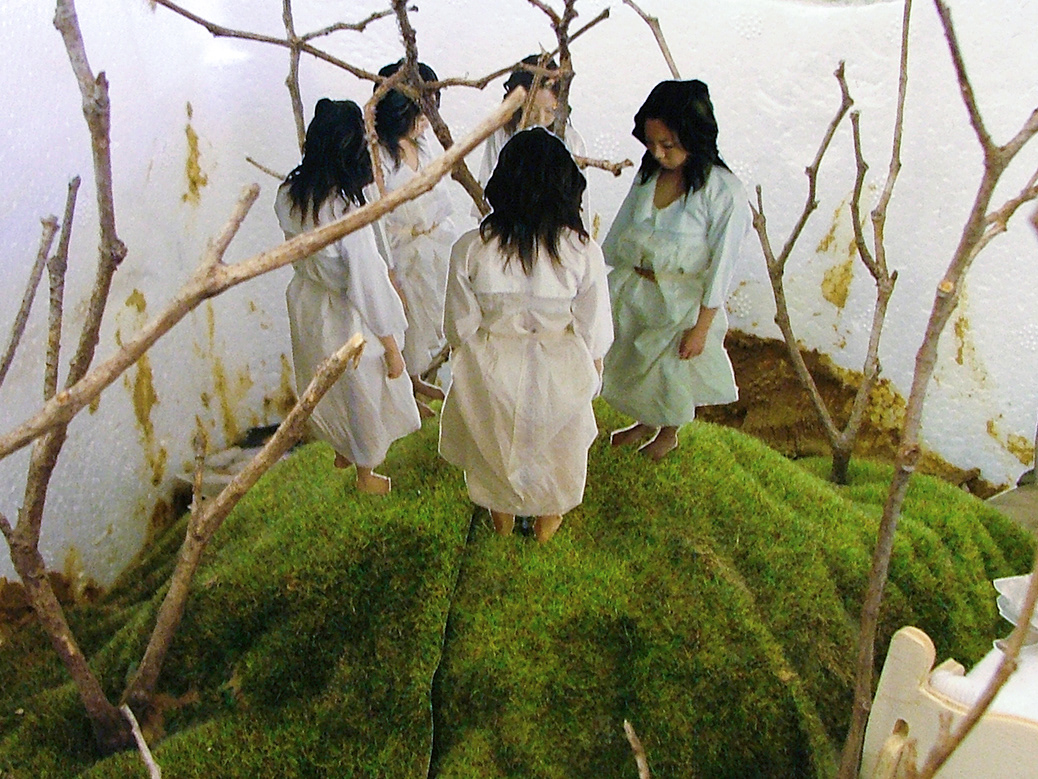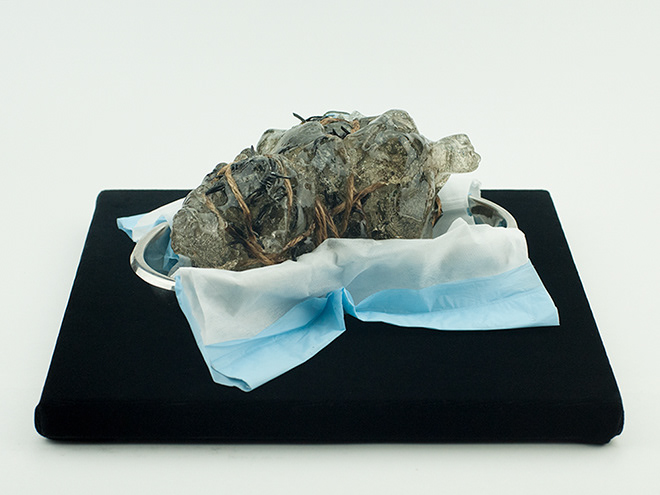Participatory performance at The Empathy Clinic, UNSW galleries, The Big Anxiety Festival 2019
Breakout My Pelvic Sorcery is a participatory art/science/tech project about pelvic pain created by interdisciplinary artist Eugenie Lee, tech collaborators, and pain science consultants. Currently, in its early development phase, this participatory performance is an artistic expression to explore an interrelationship between pain and social interactions by adopting the narratives of womxn with pelvic pain, immerse in a VR game, and a custom-built haptic pelvic belt.
This collaborative project takes multiple development stages to complete. The first development stage focused on translating a scientific survey on the stories of Australia womxn living with pelvic pain into a participatory performance. Specifically, the artist selected two most common themes out of the survey:
1. People participated in the survey wanted others to believe their pain was real;
2. They wanted others to genuinely understand what it meant when they said "it feels like my pelvis is crushing in on itself" to describe their experience.
The artist embarked on translating their wishes into a participatory performance whilst experimenting and creating a haptic belt that could ethically address them without it being a simulation exercise.
The gaming concept was also brought into the creative arena at this stage as a socially safe space to encourage positive conversations about pelvic pain and disseminate valid information with care. It brings the voice of lived experience to the forefront as a shared experience and acknowledges participants' willingness to be vulnerable.
How would it affect the person in pain if an observer says, "but you don't look sick". In the second development stage and onwards, the artist moves beyond the initial translation of the survey to highlight the interrelationship between pain and social interactions. It focuses on shifting perspectives from our biases onto creating an artistic platform that promotes Access Intimacy*.
Below video documentation is the first stage development stage, presented at the Big Anxiety Festival 2019, with a solo participant (yet to be designed for multiple participation) wearing a haptic belt whilst the artist performing as a facilitator. There is a simple VR game offered to a participant to play that does not require complex instructions. A participant only needs to move around, hitting a bouncing ball off the 3D walls with their hands. The haptic belt simultaneously produces heat, pressure, and tingling feelings around the participant's waist with a level of intensity they chose.
The second development stage (recently begun), Eugenie and her collaborators progress with developing deeper narratives of the artwork, specifically on the implications of social interactions on one's well-being. The performance invites multiple participants to embrace a shared experience by engaging in a cooperative VR game experience infused with care and compassion - a collective game that involves common phrases and commentaries from real-life stories which enhances their sense of social connectedness and reinforces the desire to lean in towards mutual respect between players.
This performance with accompanying technologies lasts approximately twenty minutes. Whilst the haptic belt encourages various sensations (from a mild discomfort to warm tingling) for each participant, the performance offers a compassionate interaction between the performer (as a game master) and the participants (as players) with intimacy and openness.
It is the wishes of the artist and the collaborators that the participants’ experiences can be openly discussed with curiosity and positivity after their participation. The reason being that although pelvic pain does not discriminate against gender differences, many assume it is exclusively a women’s disease. But more to the point, womxn (or multi-gendered) living with pelvic pain, more so than other forms of persistent pain, live with an unspoken shame - feeling they have somehow brought their condition upon themselves, are flawed, weak, unworthy, and irrelevant. Observers often express, in various ways, their doubt about the existence of this invisible pain, and this can compound these feelings. This goes back to the original purpose of creating this project that was briefly addressed in first stage iteration of this project - womxn want to be believed for their experience.
The goal of this project is to drive positive social connection. What people say or do towards womxn experiencing pain, even unintentionally, matters. Words can soothe or break a person. This project offers the artist an opportunity to tell a story from the hearts of womxn living with pelvic pain and do the right thing by them.
* Access Intimacy:
This term was coined by a Korean-American queer disability activist, Mia Mingus, who described “an elusive, hard to describe feeling when someone else “gets” your access needs… without any need for explanation nor justification. … It has felt like an unspoken, instinctual language between different people, like an entirely unique way of being able to communicate and connect. Similar to meeting someone you just “click with, … There is a good feeling after and while you are experiencing access intimacy. It is a freeing, light, loving feeling. It brings the people who are a part of it closer; it builds and deepens connection. ”.
Project collaborators:
* Dr Susan Evans (Science consultant; pelvic pain specialist)
* Emeritus Prof Roland Sussex (Language and culture consultant; linguist at the University of Queensland)
* Dr Claire Ashton-James (Science consultant; social psychologist and empathy expert at the University of Sydney)
* Bec Dean (Producer)
* Peter de Jersey (Mechatronic engineer)
* Josh Harle (New media artist)
Professor Roland Sussex, Ms Ellie Schofield and Dr Susan Evans have provided the artist with data from a scientific survey which they have recently conducted, entitled The Language of Pelvic Pain.
This research survey collated the personal pain experience of over 1000 Australian women, in their own words. Responses were anonymous, and their use of words and language is being analysed using modern computer software techniques. The researchers are investigating the words and expressions which women use when describing specific pain experiences, as an opportunity to bridge the communication gap between women with pain and their health professionals.
The similes and metaphorical expressions Breakout My Pelvic Sorcery is based on were selected from this survey (ethics clearance from the University of Adelaide H-2017-100).
Science consultants
Dr Susan Evans
Susan Evans is a Gynaecologist and Specialist Pain Medicine Physician in Adelaide. She is chair of the Pelvic Pain Foundation of Australia, member of the Advisory Board of the Robinson Research Institute, co-author of the Policy Document ‘The $6Billion Woman and the $600Million Girl: The Pelvic Pain Report’, co-developer of the Periods, Pain and Endometriosis Schools Program (PPEP-Talk), and has a long held interest in improving the quality of life of women and girls with pelvic pain. Susan has contributed widely to education on pelvic pain in Australia through medical journals, radio and television.
Emeritus Prof Roland Sussex
Roland Sussex is a Research Professor in the Institute for Teaching and Learning Innovation, and in the School of Languages and Cultures at the University of Queensland. His current research is on the triangle between language, culture and society, and technology. He is co-chief investigator in the Pain Lang Research Group at the University of Queensland, which is investigating the use of language in the diagnosis, treatment and management of pain. He was a Professor of Applied Language Studies at the University of Queensland, Linguistics and Russian at the University of Reading (UK), and the University of Melbourne in 1977-2010.
Dr Claire Ashton-James
Claire Ashton-James, PhD is a social psychologist and Senior Lecturer in Pain Management at The University of Sydney Faculty of Medicine and Health. Claire’s research focuses on the interpersonal realm of pain and healthcare. Her more recent research explores the social antecedents and consequences of pain, the impact of surgeons’ social attributes on patients’ experience of pain, the impact of clinician empathic communication on clinician and patient wellbeing.
Special thanks to Dr Bec Dean, Dr Josh Harle, Dr Natasha Andreadis, Mark Stone, Hayley Stone, Warwick de Jersey, Tom Iltcheff, Eugenie Ko, Colin Minter, Steve McKenzie, Jennifer Hunt, and Tahlia Hunt.
This project has been assisted by the Australian Government through the Creative Australia, its arts funding and advisory body; and funded by Create NSW’s 360 Vision: Virtual Reality/Augmented Reality Development Initiative.
Published Reviews
Ellen Leabeater, Can A Pain Machine Create Empathy?, The Full Story, The Guardian Australia, 06 April 2021
Hannah Reich, Australian artist Eugenie Lee evokes the chronic pain of endometriosis in high-tech experiential artworks, ABC The Art Show, 03 January 2021
Leah Na, What does it feel like? Artist creates a ‘pain-inducing belt’ to raise awareness for chronic diseases, SBS Korean Radio, 08 February 2021
Namila Benson and co-host Carly Findlay, What Does Access Look Like In The Arts?, ABC The Art Show, 02 December 2020
Keith Gallasch, The Big Anxiety #2: Breakout My Pelvic Sorcery, RealTime, 6 December 2019
Making of Breakout My Pelvic Sorcery

Everything we need to run the hacked TENS machine
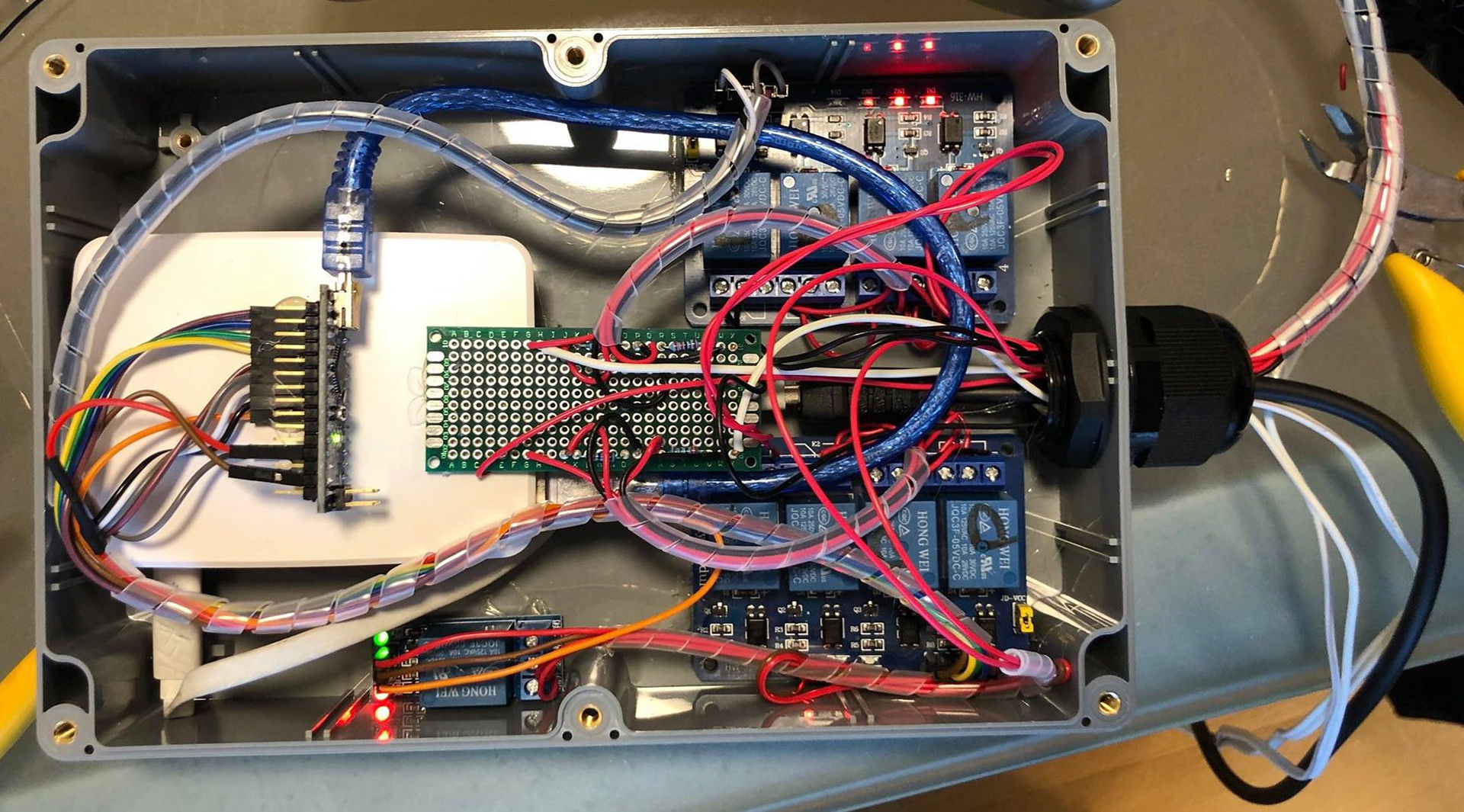
Inside the Arduino box encasing relay board & Arduino & raspberry pi
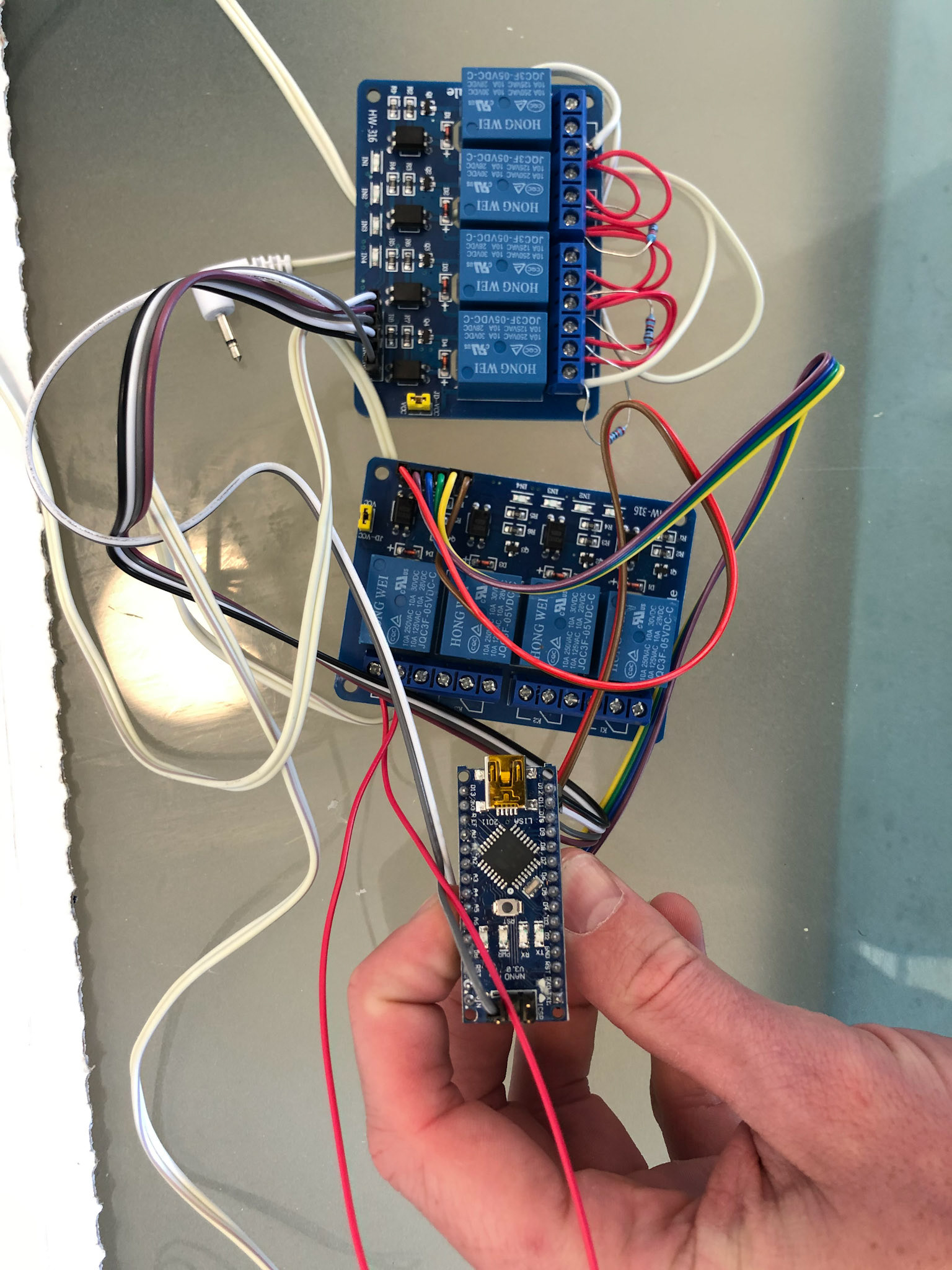
Peter with Relay boards and arduino for the preparation of selected pelvic pain effects
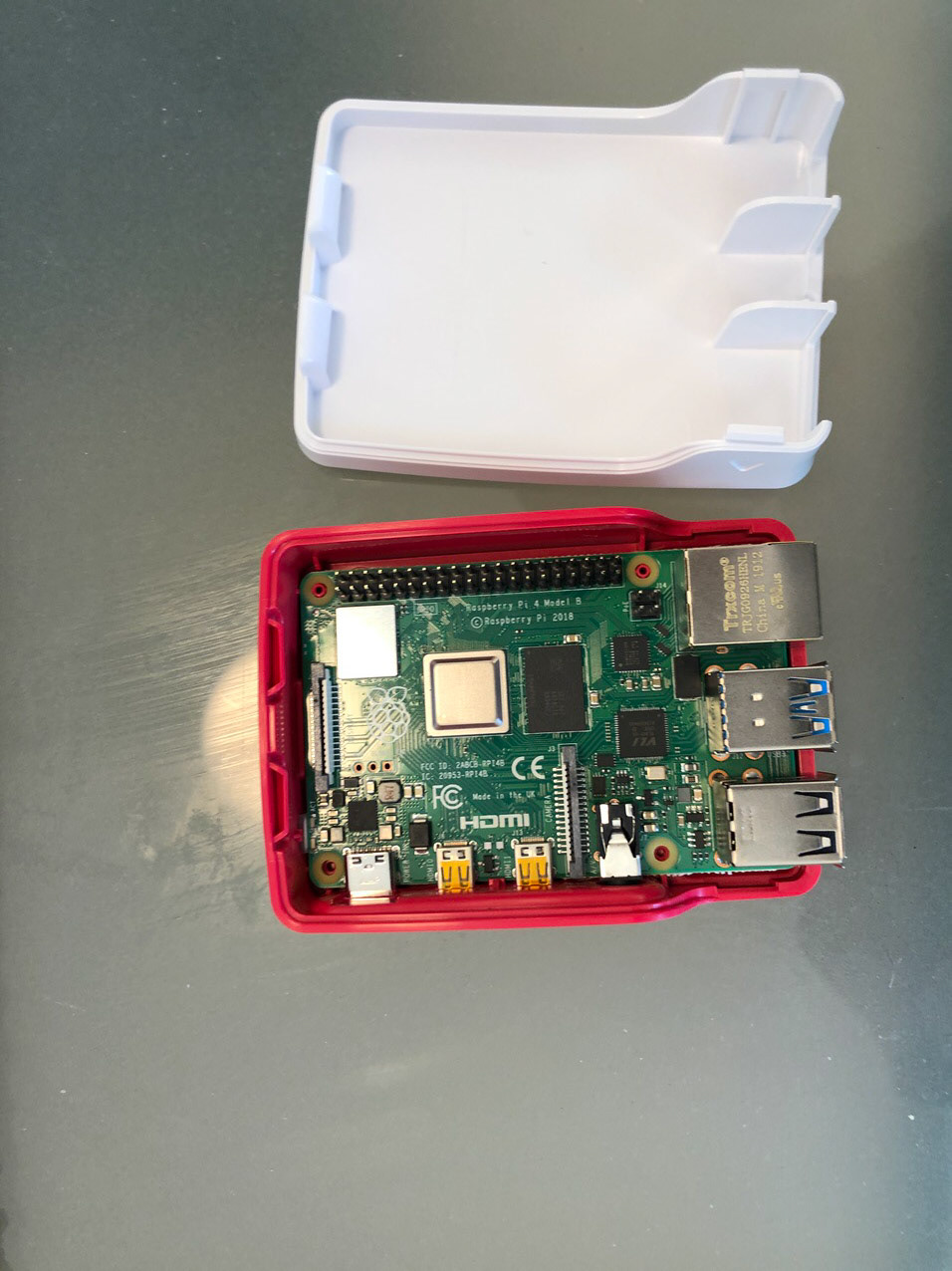
Inside of Raspberry pi with micro SD card
Mechatronic engineer Peter hacking TENS machine to experiment on some of the effects we are after, including 'electric zap', 'tearing' and 'piercing' sensation.



